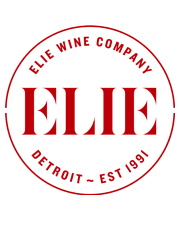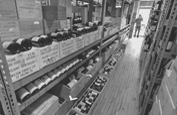Castillo Ygay – Legendary Red Rioja + Rare & Epic Current Release White Rioja from 1986 Vintage
Marqués de Murrieta Castillo Ygay Gran Reserva Especial (Rioja 2007)
Price: $75/Bottle SOLD OUT
Stop by this Saturday to taste one of the world’s great wines and enjoy serious discount prices.
A checklist of the great wineries of Rioja will always include the historic estate of Marqués de Murrieta and a checklist of great wines of Rioja will always include their Castillo Ygay Gran Reserva Especial. There are few Rioja wines that can match the elegance and power of Marqués de Murrieta’s most venerated label only made in the best vintages. Although 2007 was a difficult year due to a mildew attack that destroyed a large percentage of the fruit there is no loss of concentration. Aromas of cherry and plum eventually turn into a leather satchel full of spices. A mouthful is full and rich but not heavy, with a superbly incorporated structure of acid and tannin. There is vitality and also a whisper of ancient things. Compared with the 2005 vintage perhaps there is even more of a freshness that balances all the ripe fruit.
 2007 Castillo Ygay is a blend of 86% Tempranillo and 14% Mazuelo (aka Carignan) from “La Plana,” their finest single vineyard site at 485 meters elevation. The wine was aged for 28 months in 225 liter oak barrels, with the first 10 months in new oak (French oak for the Mazuelo, American oak for the Tempranillo). Before bottling and just after the final blending, the wine settled in concrete vessels and then spent three years in bottle before release. While drinking fantastically 10 years after vintage, Castillo Ygay is a true “vin de garde” that will develop in a proper cellar over decades.
2007 Castillo Ygay is a blend of 86% Tempranillo and 14% Mazuelo (aka Carignan) from “La Plana,” their finest single vineyard site at 485 meters elevation. The wine was aged for 28 months in 225 liter oak barrels, with the first 10 months in new oak (French oak for the Mazuelo, American oak for the Tempranillo). Before bottling and just after the final blending, the wine settled in concrete vessels and then spent three years in bottle before release. While drinking fantastically 10 years after vintage, Castillo Ygay is a true “vin de garde” that will develop in a proper cellar over decades.
The Marqués de Murrieta bodega is located east of the city of Logroño in the western subzone of Rioja Alta, just south of the poplar-lined River Ebro. The immense wall of the rocky Sierra de Cantabria to the north holds the Atlantic winds at bay. Where the grand hillsides aren’t covered in vines there are handsome pastures for cattle and sheep. Scattered about are thickets of juniper, boxwood and holly. Oak, beech and pine grow in the highlands.
Besides its role as the capital of La Rioja, the city of Logroño is the center of the wine trade there. It’s also diverse with shopping, nightlife and, of course, food. It seems every sit-down restaurant there offers roasted lamb scented with dried vine shoots that are periodically thrown onto the fire. We figure the wine pairing is obvious.
Rare & Epic (100pt) Spanish White Rioja from 1986 Vintage
Marqués de Murrieta Castillo Ygay Blanco Gran Reserva Especial (Rioja 1986)
Price: $525/bottle
 One of the greatest white wines ever produced in Spain is now available in tiny quantities. Although the 1986 vintage of Castillo Ygay Blanco had a limited early release bottled in 1992, most of it remained unbottled and was kept at the winery, where it rested in oak for 21 years, followed by six years in cement vats. You might think a white wine that has aged over 30 years past its harvest might taste a little old. It’s actually quite the opposite. This wine is still in its youth. Robert Parker’s Wine Advocate writer Luis Gutiérrez (who awarded the wine 100 points) claims this wine likely has another 50 years of prime drinking, if not longer.
One of the greatest white wines ever produced in Spain is now available in tiny quantities. Although the 1986 vintage of Castillo Ygay Blanco had a limited early release bottled in 1992, most of it remained unbottled and was kept at the winery, where it rested in oak for 21 years, followed by six years in cement vats. You might think a white wine that has aged over 30 years past its harvest might taste a little old. It’s actually quite the opposite. This wine is still in its youth. Robert Parker’s Wine Advocate writer Luis Gutiérrez (who awarded the wine 100 points) claims this wine likely has another 50 years of prime drinking, if not longer.
The wine was produced mostly with Viura grapes and a touch of Malvasía Riojana. It’s a challenge to convey the character of this wine through words. It’s powerful, there is no doubt, yet it also possesses an elegance that could only come with age. The flavors and aromatics are like a harvest season grocery cart filled with orchard fruits, lemon curd, honey, hard-shelled nuts, flowers, mushrooms, we could go on, and the wine does go on, with an epic, mineral, salty finish that lingers long into the sunset.
- - -
Posted on 2017.10.19 in Saturday Sips Wines, Spain DO, Rioja DOC | Read more...
The Champagne Society – October 2017 Selection: Champagne Jacquesson 739
Champagne Jacquesson “Cuvée 739” (Extra Brut)
Price for The Champagne Society members: $64 (regular price $75)
“No Champagne house today is on a trajectory of ascent as steep as Jacquesson. While many houses are on the prowl for more fruit to increase production, Jacquesson is drastically slashing its yields and its contracts to radically improve quality in spite of lowering quantity. When others set out to make a consistent blend every year, Jacquesson throws uniformity to the wind to draw the best blend out of every vintage. Each time I look, this little house in the village of Dizy appears more like a fanatical grower producer. Purely on the refinement of its current cuvées, Jacquesson has leapt from ranking among Champagne‘s top 20 houses to a lofty position among its top 10.” – Tyson Stelzer, The Champagne Guide
 As Mr. Stelzer indicated in the above paragraph, although technically a Champagne house, brothers Laurent and Jean-Hervé Chiquet operate Jacquesson much like a grower operation. Besides their own organic and sustainably farmed 69 acres of vineyard (severely pruned for low yields), they work closely with their neighbors to supplement from an additional 19 acres, all in Grand Cru and Premier Cru vinyeards.
As Mr. Stelzer indicated in the above paragraph, although technically a Champagne house, brothers Laurent and Jean-Hervé Chiquet operate Jacquesson much like a grower operation. Besides their own organic and sustainably farmed 69 acres of vineyard (severely pruned for low yields), they work closely with their neighbors to supplement from an additional 19 acres, all in Grand Cru and Premier Cru vinyeards.
While most non-vintage Champagne is made up of several individual vintages blended with uniformity in mind, the aim of Jacquesson’s 7-Series is to emphasize the best qualities of a given year. Jacquesson’s “Cuvée 739” is based on the 2011 vintage and 31% Reserve wines, all from Grand and Premier Cru sites in the Côte des Blancs and Vallée de la Marne. 739 is an assemblage of 57% Chardonnay, 21% Pinot Noir and 22% Pinot Meunier, all fermented with indigenous yeasts and vinified in large oak foudres. The unfiltered wine was disgorged in July 2014 with a dosage of 3.5 grams per liter, making it an extra brut Champagne.
Attention to fine detail shows in a glass. This fleshy blend embraces each and every one of your senses. From the satisfying pop of the cork to the last full-bodied sip, you journey across orchards of ripe white fruit, rocky outcrops, and a bakery full of warm brioche.

- - -
Posted on 2017.10.14 in France, The Champagne Society, Champagne | Read more...
Precision Old-vine Spanish Grenache to Rival Châteauneuf-du-Pape
Domaines Lupier “El Terroir” (Navarra 2012)
~$31/bottle
We’ve been big fans and supporters of Domaines Lupier since their very first vintage in 2008. We’re not the only ones, they’ve been garnering international accolades from the beginning. They have consistently produced wines of precision and clarity that reflect the place and the year. The recently released 2012 vintage of “El Terroir” is no different, and it may even be the finest vintage of the cuvée to date. With an ethereal nose, an incredible purity of fruit, and silky tannins on an everlasting finish, it puts to mind Château Rayas – another 100% old-vines, Grenache-based wine from the legendary producer in Châteauneuf-du-Pape.
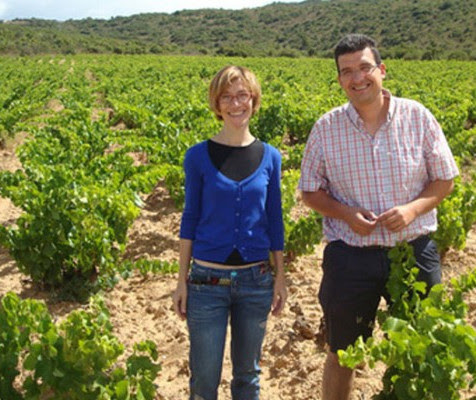 When husband and wife team Enrique Basarte and Elisa Úcar began searching Spain for old-vine Grenache vineyards they realized what they were looking for was a mere 40 minutes from their home in Pamplona. They settled in to the small village of San Martin de Unx and identified 27 separate plots, with vines ranging from 68 years old to over 100 years old (the oldest vineyard planted in 1903), at elevations up to 2,500 feet. This is the northern region of Navarra, more specifically, the cool and mountainous sub-zone of Baja Montaña, where wines can show harmony of ripeness and freshness with all the precision of an oceanic climate.
When husband and wife team Enrique Basarte and Elisa Úcar began searching Spain for old-vine Grenache vineyards they realized what they were looking for was a mere 40 minutes from their home in Pamplona. They settled in to the small village of San Martin de Unx and identified 27 separate plots, with vines ranging from 68 years old to over 100 years old (the oldest vineyard planted in 1903), at elevations up to 2,500 feet. This is the northern region of Navarra, more specifically, the cool and mountainous sub-zone of Baja Montaña, where wines can show harmony of ripeness and freshness with all the precision of an oceanic climate.
These folks aren’t just lucky beginners. Enrique has over 16 years experience in vineyards all over Spain and an academic background in agronomic engineering and oenology, while Elisa has more than 13 years experience in the wine sector. From the outset the two decided take the biodynamic approach to viticulture to improve and maintain the health of the vines using natural and sustainable practices. With the ultimate goal of expressing the terroir of Baja Montaña in Navarra through wines of superb balance.
That goal was undeniably achieved again with the 2012 vintage of El Terroir. It is a deeply colored wine with a crystal clear purity of fruit rarely found in Grenache-based wines. Aromatically complex with layers of floral, cherry, and spice, a sip is superbly balanced and practically begs another in short measure. Only about 2,200 cases are produced.
 Domaines Lupier “La Dama” (Navarra 2011)
Domaines Lupier “La Dama” (Navarra 2011)
~$67/bottle
La Dama is Domaines Lupier top cuvée. They select fruit from stonier vineyards, where the soils are shallower and the mother rock is very close to the surface. These plots tend to produce focused, mineral and elegant wines, where the chalkiness of the tannins speak of the limestone soils. This is quite possibly the finest Grenache-based wine in all of Spain and suitable for long-term cellar development. Only about 580 cases are produced.
- - -
Posted on 2017.10.05 in Saturday Sips Wines, Spain DO, Navarra | Read more...
Cru Beaujolais vs. Cru Savoie Cage-Match
Even though they are only separated by about 50 miles in eastern France, the production zones of Beaujolais and Savoie are quite different. The sandy clay soils over granite of Beaujolais allow the Gamay grape to find its truest expression, while the alpine patchwork of vineyards in Savoie encompass more than twenty Crus and account for over a dozen significant grape varieties. If there is any one Savoie variety and expression that can be compared to Beaujolais it is the dark-skinned Mondeuse. Indeed, Savoie Mondeuse is often produced much like a light and fruity Beaujolais yet can also be made for medium-term aging comparable to the most ambitious of Cru Beaujolais.
This Saturday’s tasting is an example of the highest level production methods in both areas. We’ll be comparing wines from two of the top producers in their respective appellations, both disciples of traditionalist Jules Chauvet, both returning to the old practices of viticulture and vinification: never using synthetic herbicides or pesticides, harvesting late, rigorously sorting to remove all but the healthiest grapes, adding minimal doses of sulfur dioxide or none at all, and refusing both chaptalization and filtration.
$27 Guy Breton “Vieilles Vignes” (Morgon 2014) SOLD OUT
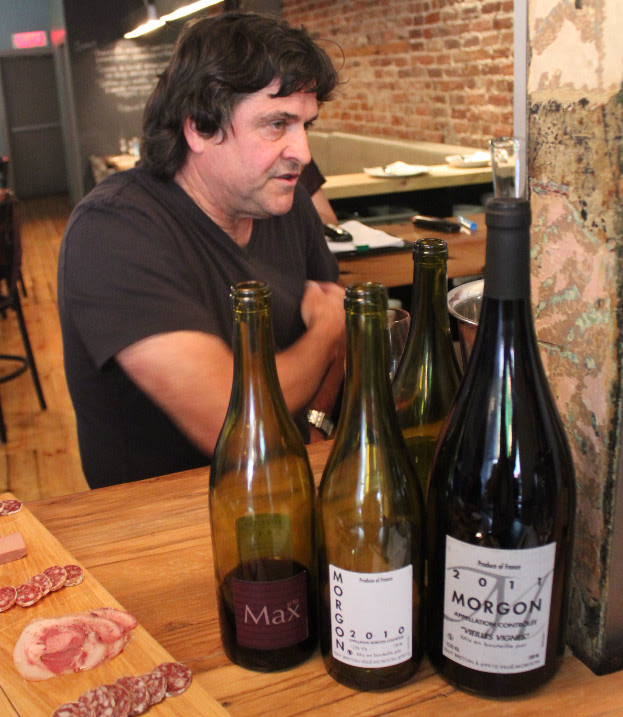 Representing Beaujolais is Guy Breton. Guy makes wines as a reflection of his character – honest, affable, and down-to-earth. He took over the tiny family domaine of just over seven acres from his grandfather in 1986. Until that point, the family was selling their fruit to the large cooperative wineries which dominated the region.
Representing Beaujolais is Guy Breton. Guy makes wines as a reflection of his character – honest, affable, and down-to-earth. He took over the tiny family domaine of just over seven acres from his grandfather in 1986. Until that point, the family was selling their fruit to the large cooperative wineries which dominated the region.
Guy’s principal wine, the Morgon “Vieilles Vignes,” is sourced from 2.5 acres of 80 year old vines in the Saint Joseph and Grand Cras subzones of the appellation, which give fine, stony wines. A high-lying sandy parcel contributes more complexity, structure, and acidity to the blend. After fermentation, the wine is aged on fine lees in Burgundian barrels (of at least the third passage).
~$29 Domaine Jean-Pierre & Jean-François Quénard “Elisa” Mondeuse (Savoie 2014) SOLD OUT
 Representing Savoie is Jean-François Quénard. Viticulture in Savoie is pure opportunism, only two percent of the region’s agricultural lands are occupied with vines. As such, production is small and generally consumed by locals and the tourists that flock to the region for hiking and skiing. It’s in the cru of Chignin – part of the crescent-shaped stretch of limestone scree known as the Combe de Savoie that is known to produce the greatest Savoie wines – where Jean-François is doing his life’s work. He owns 37 acres of vineyards around the village of Chignin and took over winemaking from his father in 1987 after studying winemaking in Burgundy, Gigondas, Bordeaux, and California.
Representing Savoie is Jean-François Quénard. Viticulture in Savoie is pure opportunism, only two percent of the region’s agricultural lands are occupied with vines. As such, production is small and generally consumed by locals and the tourists that flock to the region for hiking and skiing. It’s in the cru of Chignin – part of the crescent-shaped stretch of limestone scree known as the Combe de Savoie that is known to produce the greatest Savoie wines – where Jean-François is doing his life’s work. He owns 37 acres of vineyards around the village of Chignin and took over winemaking from his father in 1987 after studying winemaking in Burgundy, Gigondas, Bordeaux, and California.
Cuvée “Elisa” is named after Jean-François’s fourth daughter and it is classic Mondeuse, blackish-purple and laden with juicy wild berries. Old vines give the wine concentration while vinification for 18 months in barrel provides depth.
All prices are based on the purchase of six or more bottles. (Mix & Match)
- - -
Posted on 2017.09.27 in Saturday Sips Wines, France, Beaujolais, French Rarities | Read more...
Clearing 2012 Médoc Bordeaux
Château Haut-Maurac (Médoc 2012)
Special 6-Pack Price: $117 ($19.50/bottle) SOLD OUT
We picked up the last few cases of the 2012 vintage of Château Haut-Maurac at a great price and are passing that savings on to you.
Drinking at its peak, this is a wine of great value, showcasing the strength of Merlot in a somewhat challenging vintage in Bordeaux. With aromas of mocha, blackberry sap, autumn leaves, and a whiff of black pepper spice, it clearly expresses its place. A sip is rounded, generous with fruit but not fruity, and finishing with soft and chewy tannins. It’s a versatile wine that will make a nice complement to a quick appetizer spread of olives and cheese or just about anything off the grill. It’s an ideal wine to stock for drinking through autumn and into the holidays.
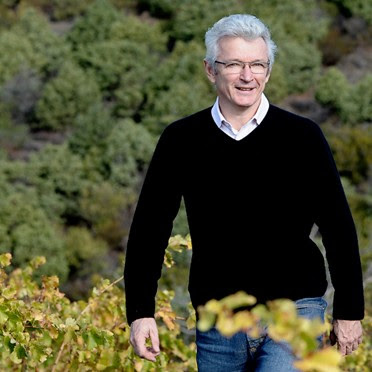 Château Haut-Maurac is located on the left bank of the Gironde estuary, in the municipality of Saint-Yzans-de-Médoc. It’s a project owned and led by Olivier Decelle, who’s perhaps best known for rebuilding Mas Amiel, one of the leading and most respected wineries in the Roussillon, and also for bringing Château Jean Faure (neighbor to Château Cheval Blanc in Saint-Émilion) back to prominence. Because of the quality of production under Olivier Decelle, Château Jean Faure’s Grand Cru Classé status was recently restored.
Château Haut-Maurac is located on the left bank of the Gironde estuary, in the municipality of Saint-Yzans-de-Médoc. It’s a project owned and led by Olivier Decelle, who’s perhaps best known for rebuilding Mas Amiel, one of the leading and most respected wineries in the Roussillon, and also for bringing Château Jean Faure (neighbor to Château Cheval Blanc in Saint-Émilion) back to prominence. Because of the quality of production under Olivier Decelle, Château Jean Faure’s Grand Cru Classé status was recently restored.
So it comes as no surprise that Olivier Decelle is taking great lengths to ensure this Cru Bourgeois is of the highest quality. Aspects of organic and biodynamic cultivation are used alongside the more conventional lutte raisonée (reasoned fight), all with the aim of producing the best fruit possible.
From 60 acres of 35 year old vines on gravel and clay soils, 2012 Château Haut-Maurac is a blend of 60% Merlot, 35% Cabernet Sauvignon, and 5% Malbec. Aging takes place for 18 months, 20% in vats, 80% in oak barrels (25% new).
- - -
Posted on 2017.09.21 in France, Bordeaux, Saturday Sips Wines | Read more...
Featured Wines
- Notebook: A’Boudt Town
- Saturday Sips Wines
- Saturday Sips Review Club
- The Champagne Society
- Wine-Aid Packages
Wine Regions
Grape Varieties
Aglianico, Albarino, Albarín Tinto, Albillo, Aleatico, Alicante Bouschet, Aligote, Altesse, Arcos, Aubun, Auxerrois, Barbarossa, Beaune, Biancu Gentile, Bonarda, bourboulenc, Cabernet Sauvignon, Caladoc, Carignan, Chablis, Chenin Blanc, Cinsault, Clairette, Cortese, Corvinone, Cot, Counoise, Dolcetto, Fiano, folle Blanche, Frappato, Fumin, Gamay, Garganega, Garnacha Tintorera, Godello, Graciano, Grenache, Grenache Blanc, Grolleau, Groppello, Jacquère, Lladoner Pelut, Maconnais, Malbec, Malvasia, Malvasia Nera, manseng, Marcelan, Marselan, Marzemino, Melon de Bourgogne, Mencía, Merlot, Mondeuse, Montepulciano, Montònega, Mourv, Mourvèdre, Muscadelle, Muscat, Natural, Nebbiolo, Nero d'Avola, Niellucciu, Palomino, Patrimonio, Pecorino, Pedro Ximénez, Persan, Petit Verdot, Pineau d'Aunis, Pinot Auxerrois, Pouilly Fuisse, Pouilly Loche, Poulsard, Riesling, Rondinella, Rose, Rousanne, Roussanne, Sagrantino, Sangiovese, Sauvignon, Sciacarellu, Serine, Souson, Sylvaner, Syrah, Tannat, Tempranillo, Teroldego, Timorasso, Treixadura, trepat, Trousseau, Ugni Blanc, Viognier, Viura, Xarel-loWines & Events by Date
- September 2025
- August 2025
- July 2025
- June 2025
- May 2025
- April 2025
- March 2025
- February 2025
- January 2025
- December 2024
- November 2024
- October 2024
- September 2024
- August 2024
- July 2024
- June 2024
- May 2024
- April 2024
- March 2024
- February 2024
- January 2024
- December 2023
- November 2023
- October 2023
- September 2023
- August 2023
- July 2023
- June 2023
- May 2023
- April 2023
- March 2023
- February 2023
- January 2023
- December 2022
- November 2022
- October 2022
- September 2022
- August 2022
- July 2022
- June 2022
- May 2022
- April 2022
- March 2022
- February 2022
- January 2022
- December 2021
- November 2021
- October 2021
- September 2021
- August 2021
- July 2021
- June 2021
- May 2021
- April 2021
- March 2021
- February 2021
- January 2021
- December 2020
- November 2020
- October 2020
- September 2020
- August 2020
- July 2020
- June 2020
- May 2020
- April 2020
- March 2020
- February 2020
- January 2020
- December 2019
- November 2019
- October 2019
- September 2019
- August 2019
- July 2019
- June 2019
- May 2019
- April 2019
- March 2019
- February 2019
- January 2019
- December 2018
- November 2018
- October 2018
- September 2018
- August 2018
- July 2018
- June 2018
- May 2018
- April 2018
- March 2018
- February 2018
- January 2018
- December 2017
- November 2017
- October 2017
- September 2017
- August 2017
- July 2017
- June 2017
- May 2017
- April 2017
- March 2017
- February 2017
- January 2017
- December 2016
- November 2016
- October 2016
- September 2016
- August 2016
- July 2016
- June 2016
- May 2016
- April 2016
- March 2016
- February 2016
- January 2016
- December 2015
- November 2015
- October 2015
- September 2015
- August 2015
- July 2015
- June 2015
- May 2015
- April 2015
- March 2015
- February 2015
- January 2015
- December 2014
- November 2014
- October 2014
- September 2014
- August 2014
- July 2014
- June 2014
- April 2014
- March 2014
- February 2014
- January 2014
- December 2013
- November 2013
- October 2013
- September 2013
- August 2013
- July 2013
- June 2013
- May 2013
- April 2013
- March 2013
- February 2013
- January 2013
- December 2012
- November 2012
- October 2012

